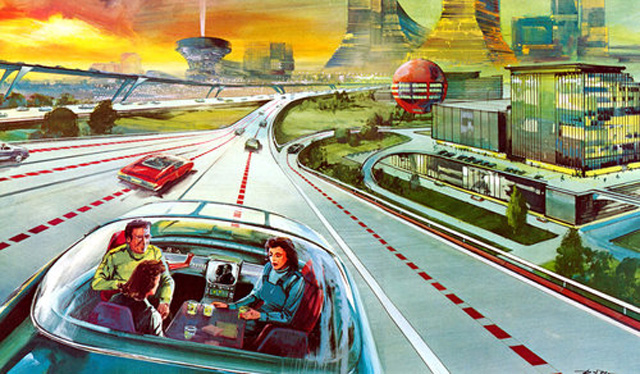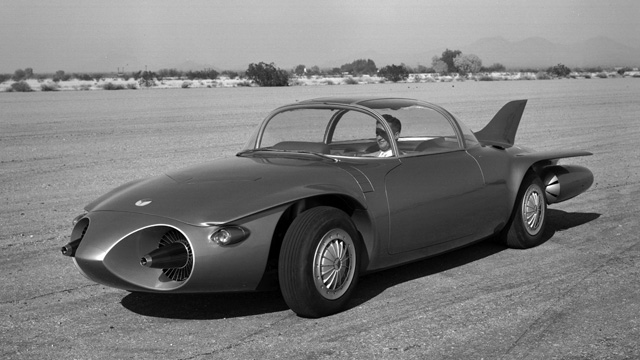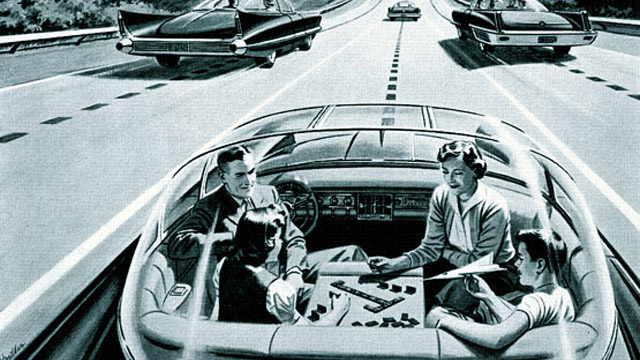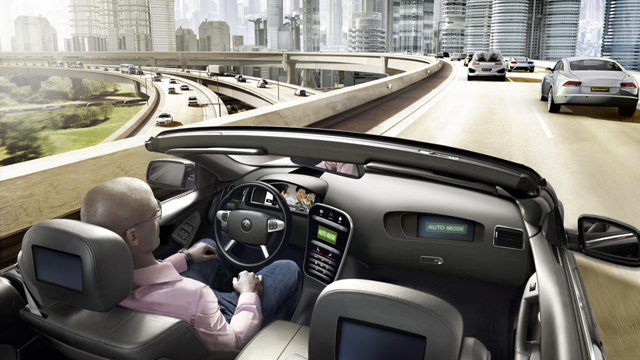
Imagine your car speeding along the highway, its steering and speed being automatically controlled by electronic sensors, while you just sit back and relax. Making travel more enjoyable and safer, self-driving cars should in theory rid the world of traffic jams, collisions and driver fatigue. The funny par is that they still sound like something straight out of a sci-fi movie, but the truth is that they are here now – and they are fully functional. What’s even more baffling is that they have actually been around for decades, originally appearing as far back as 1956.
The Concept Has Been Around Since the ‘20s

The concept of a self-driving or driverless car has existed since the 1920’s, when the “Iinrrican Wonder” drove through the streets of New York. Advertisements for driverless cars were in circulation as well, with newspapers depicting a scene where passengers could be enjoying a game of cards in the car while it drives itself. In 1939, at the World’s Fair in New York, visitors stood in lines up to two miles long to see the General Motors Futurama exhibit. Inside, a conveyor belt carried them high above a miniature landscape which depicted a world of cars controlled by radio signals, spread out beneath a glass dome. GM continued to promote this autonomous vision in the 1950s with the Firebird II, a turbine-powered car that could drive itself by following an “electronic control strip” embedded in the road. But, that was just the beginning.
The First of Its Kind

In 1958, Engineers at the RCA research center at Princeton, N.J. experimented with a driverless automobile that scoots around an electronic test track. The elements of the test track included a series of rectangular wire loops, a continuous guidance cable buried beneath the pavement, and a chain of transistorized detector circuits along the roadside, each linked to one of the buried loops. The road is essentially made of lengths of electronic gear and in effect, does the driving itself. The “electronic road” can sense the presence of any metallic vehicle on its surface and tells you where the vehicle is, how fast it is going and in what direction. If the automatic car starts to veer to the side, the mechanism detects the error and sends a corrective message to the steering mechanism.
In the 1960′s, a project by the Ohio State University also paved the way to automated vehicles that can be activated through electronic devices in the roadway, similar to the mechanism used by the RCA research center. The car contained equipment which would allow it to drive down a freeway, turning, slowing down or speeding up as necessary and on its own. The automatic system had been in the works for six years under the guidance of Dr. Robert L. Cosgriff, head of Ohio State’s Communications and Control Systems Lab. The cost of the system was not highly cost-prohibitive, requiring a suitcase full of components to build the car that would only cost a few hundred dollars, significantly cheaper than a Toyota Supra, for instance. However, there was also a significant expense of installing components in the roadway, around one-tenth the cost of highway construction, as shown here.
Today’s Self-Driving Cars

Today, the Google driverless car is a project that has been developing technology for autonomous cars. The software powering these Google self-driving cars is called Google Chauffeur, with a 64-beam laser mounted on the top of the car to serve as the range finder. The laser allows the vehicle to build extremely detailed maps of the environment around it, which is combined with high-resolution maps that allow the car to drive itself.
The system drives at the speed limit stored on its maps and always maintains a safe distance from other vehicles using its plethora of sensors. In case of emergency or unforeseen circumstances, the self-driving system also provides an override that allows the driver to take control of the car. According to the leader of Google’s self-driving car project, Google’s Prius and Lexus cars are safer than human drivers.
Many proponents claim self-driving cars could revolutionise the way we move around our cities, assuming the technology is managed so that it benefits everyone. As we have clearly seen, autonomous cars are not a new idea and are definitely here to stay as we move into the future.






